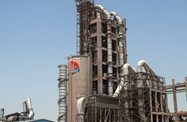With demand for cement in Ras Al Khaimah (RAK) poised to rise and regional projects already driving up exports, there are signs that the industry could be turning a corner.
Like other firms across the Gulf region, RAK’s cement producers suffered a dramatic drop in business following the post-2009 slump in construction work, when projects worth an estimated $300bn were either cancelled or postponed in the UAE alone, according to Construction Week Online.
While there is still the risk of turbulence, such as any further slowdown in Asia, efforts to develop new markets, together with major regional infrastructure programmes led by Qatar’s 2022 FIFA World Cup preparations, look set to provide the emirate’s cement producers with welcome opportunities.
The industry has been buoyed by a positive performance from Ras Al Khaimah Cement Company (RAKCC), which turned around results to post a solid net profit for the first three quarters of 2012. While domestic trade fell from $30.22m in the opening nine months of 2011 to $27.58m in the same period of this year, the drop was more than offset by global exports, according to a statement released to the Abu Dhabi Securities Exchange on November 5 by RAKCC’s general manager, Robin De Beer.
RAKCC’s overseas sales for the first three quarters of 2012 reached $20.37m, up almost three-fold on figures for the same period last year. De Beer described the increase as “tremendous”, adding that net profit of $1.33m marked an excellent turnaround on the $4.46m loss recorded for the first nine months of 2011.
Ras Al Khaimah White Cement Company, however, has yet to feel the effects of the recovery, with the company’s latest results, issued on November 11, suggesting the market remains slow, with net profits for the first nine months of 2012 reaching $9.36m, less than half the figure for the same period in 2011.
While the two leading cement producers will be looking to build on their results, the state-owned quarry in the Hajar Mountain range is gaining from a thriving export market, recently inking a deal to ship 11m tonnes of limestone to India for use in manufacturing steel. The quarry, which has the capacity to produce 65m tonnes of limestone aggregate a year, is the main source of upstream materials for the emirate’s ceramic industry and local construction trade.
However, while RAK is home to an abundance of raw materials and processing facilities, its cement sector has to contend with both oversupply and high levels of competition in the marketplace. According to some estimates, production capacity in the UAE is almost double that of current demand.
While the roll out of major infrastructure programmes in Saudi Arabia and Qatar should go some way to address this imbalance, added competition is also likely to come from Oman, which is putting plans in place it to boost cement production. The media recently reported that an Omani-based firm planned to build a new cement plant with an annual capacity of between 3m and 4m tonnes close to the port of Al Duqm in the east of the country, which would significantly increase the nation’s output. Oman’s two existing cement producers currently have an installed capacity of around 4.7m tonnes between them.
RAK’s industry players will be looking to the expected rise in regional construction to help offset a possible fall in demand from Asian markets or a localised downturn.

